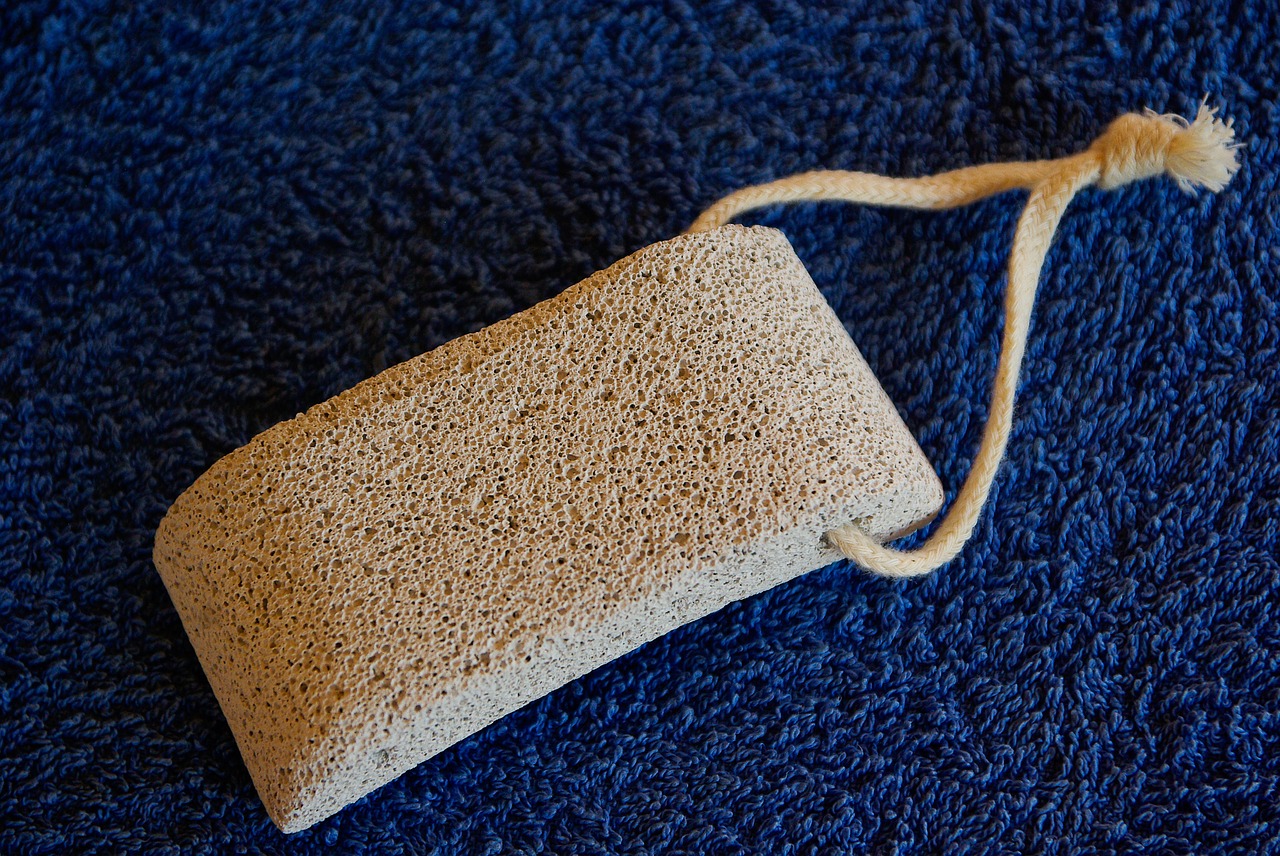Table of Contents
What is Pumice Stone
A pumice stone created when lava and water mix. It is a light but abrasive stone that used to remove dry and dead skin. A pumice stone can also soften your calluses and corns to help ease friction pain.
You can use this stone daily, but it is essential to know how to use it correctly. If you’re not careful, you can remove too much skin, cause bleeding, or increase the risk of infection.
A Pumice stone can be used to remove dead skin from a callus or corn. Reducing the size of the callus or corn can result in less pressure or friction and less pain.
What are the Benefits of Pumice Stone?
As already mentioned, pumice stones are great for manually exfoliating the skin. Hands, feet, elbows, and knees in particular, as these areas naturally thicken in response to trauma (i.e., friction from running, lifting weights, shoes that are too tight, and the like). These calluses formed to “protect the skin from bumps and bumps,” explains Patel, but their appearance isn’t that pretty. Come on in, pumice stones – the natural remedy for smooth skin. Take a look at these gently polished calluses.
Also Read: Right Way to Wash Your Face Properly
Pumice Stone: How to Use 4 simple steps?
Pumice stones can work wonders for smooth, crack-free skin. Just be sure to use them properly, as improper use can rub your skin raw. Here are the step-by-step instructions according to Derms:
Step 1: Prepare The Skin
First things first, you need to start with the smoothest canvas possible. That means undoing the top layer of skin with a peel. We are interested in gentle chemical peels like AHAs (lactic acid is still a fan favourite) to remove dead skin cells and smooth the texture gently.
You can even soak the skin, especially the rougher areas that require a little more love. “If you’re washing thick-skinned areas (like feet), it may be best to soak in warm water for five minutes before using the stone,” says Patel. It allows water to penetrate the skin and remove dead cells more efficiently. As board-certified dermatologist Loretta Ciraldo, FAAD, once told us about lukewarm baths, soaking can swell the surface of the skin, allowing more ingredients that are right for you to penetrate (especially if you add soap or oil to the water for an incredibly softening lunge, as suggested by Marmur).
Let the towel dry after soaking. You always want to use the pumice stone on clean, damp skin, says Patel.
Step 2: Exfoliate
Here comes the fun part: rub the stone over the area in a circular motion; Medium pressure is more than enough to remove dead skin. If you do a peel, you can even see visibly dead skin build-up on the stone (gross, but strangely satisfying).
Make sure you stop when you get the smoothness you want (about two to three minutes is enough, says Marmur) or when dead skin is no longer clinging to the pores of the pumice stone.
Also Read: Clindamycin Phosphate Topical 1% Lotion
Step 3: Dry And Moisten
After all the exfoliation, you will want to retain some moisture. After towel drying your skin, apply a thick cream to seal the microcracks. “Since manually peeling the stone can cause micro-abrasions on the skin, it is important to apply a moisturizer to repair the small cracks in the skin of the pumice stone,” explains Patel.
Step 4: Clean Your Stone
Do not skip this step. “Clean the pumice stone after each use,” advises Patel. Thoroughly rinsing with soap and water can ensure that bacteria and fungi do not grow in the pores of the stone. Make sure to allow the stone to dry completely before storing it, as the remaining moisture can quickly become a fertile breeding ground for bacteria.


